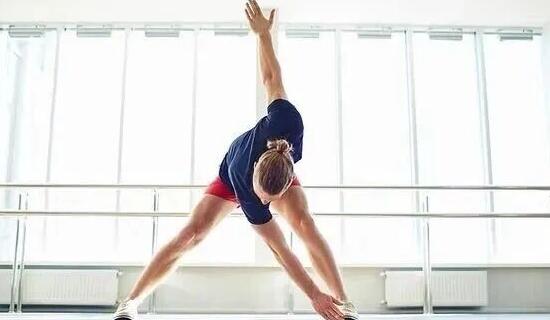An Athlete's Essential Guide: 4 Stretching Techniques for Peak Recovery and Performance
During a workout, it's easy to overlook the importance of stretching. In reality, a smart stretching routine is critical not only for improving athletic performance but also for effectively preventing injuries. Stretching is an indispensable part of your workout, both before and after you exercise.
This article will explore the different phases of stretching, the correct techniques, and how to scientifically tailor your routine to ensure safety and reduce your risk of injury.
1. Pre-Workout vs. Post-Workout: Which Is It?
Many people are confused about whether they should stretch before or after their workout. The truth is, you don't have to choose—both are essential because they serve different, complementary purposes for injury prevention and recovery.

Pre-Workout Stretching: The goal here is injury prevention. This phase should consist of dynamic stretching (e.g., leg swings, arm circles, torso twists). These active movements warm up your muscles and tendons, improve your joints' range of motion (ROM), and gradually adapt your body for the activity to come, boosting flexibility and lowering the risk of strains.
Post-Workout Stretching: The primary goal here is muscle and tendon repair. After high-intensity exercise, your muscles become stiff, and circulation can be compromised, leading to fatigue and soreness. This is the time for static stretching (holding a stretch). It effectively elongates muscles, helps alleviate post-workout soreness (known as DOMS, or Delayed-Onset Muscle Soreness), and aids in returning muscles to their resting state.
Post-workout stretching should be part of your cool-down, which typically includes 5-10 minutes of light-intensity movement (like walking or light jogging) followed by 5-10 minutes of static stretching. This process prevents blood from pooling, helps deliver oxygen and nutrients to your muscles, and ultimately reduces fatigue and speeds up recovery.
2. How Far Should You Stretch? (Hint: It Shouldn't Hurt)
The purpose of stretching is to make muscles more pliable and increase your joint's range of motion. Therefore, the process should not be painful.
Many people mistakenly believe in the "no pain, no gain" philosophy for stretching. In reality, when a muscle is stretched to the point of pain, the body activates a protective mechanism called the stretch reflex. This reflex causes the muscle to contract to protect itself from tearing, which is the exact opposite of what you're trying to achieve.
To avoid triggering this reflex, you should feel a "stretch sensation," not pain. The stretch should be performed within a comfortable range where you feel a mild, gentle pull, but no sharp discomfort. This is the sweet spot for achieving the best results safely.
3. The Breathing Problem
When holding a stretch, many people instinctively hold their breath. This creates tension in the muscles, making the stretch more difficult and less effective.
To avoid this, maintain smooth, steady breathing throughout your stretch. Deep breathing helps relax your muscles, increases oxygen supply, and improves blood circulation, all of which promote muscle repair.
Pro-tip: Inhale to prepare, and as you exhale, try to relax and sink just a little deeper into the stretch. This method effectively relaxes the body, enhances the stretch, and can help reduce post-workout muscle soreness.
4. How Long Should You Hold Each Stretch?
There is some debate in the fitness world about duration, but the following recommendations are based on current research and best practices:
Hold Time Per Stretch: To fully lengthen the muscle tissue, it is generally recommended to hold each static stretch for 20 to 30 seconds. While a 10-second stretch might provide a brief feeling of relief, it's not enough time to make a real change in flexibility.
-
Beginners: 20 seconds is a great starting point.
-
Advanced Athletes: You can extend the hold to 60 seconds or longer, especially when targeting deep, tight muscles.
Frequency and Total Session Time: This depends on your experience level:
-
Beginners: Aim to stretch each muscle group for 2-3 repetitions (or sets). A total stretching time of 5-10 minutes is sufficient.
-
Intermediate/Advanced: You can increase this to 3-5 repetitions per muscle group. As your fitness level improves, you can extend your total session time to 20-30 minutes. (Professional athletes with specific needs may stretch for up to two hours.)
This article is for reference only and does not represent the position of this website. If there is any infringement, please contact us to delete it! !

